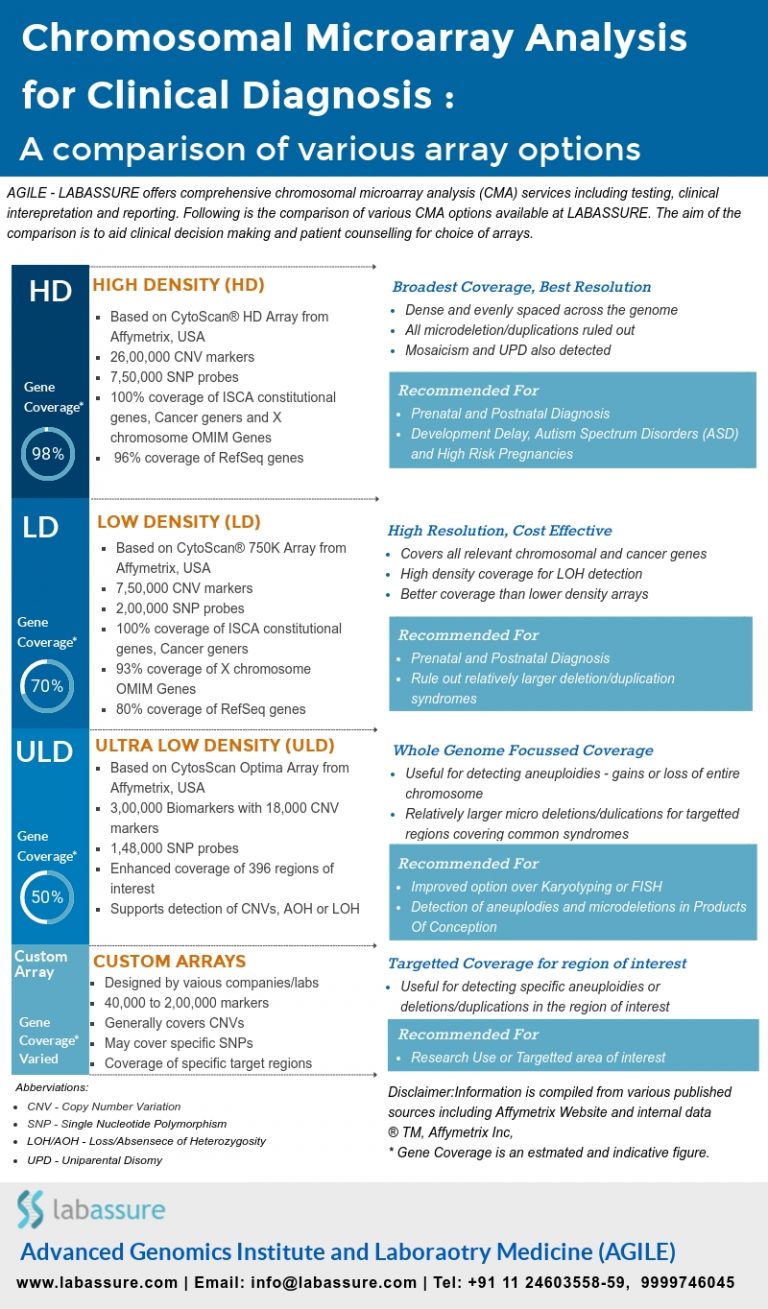Chromosomal Microarray Analysis (CMA) is increasingly getting accepted as the first line test for various prenatal and postnatal conditions. It is indicated as an important test in diagnosis of various condition/disorders. Often the patients and clinicians are confused with respect to the various chips which are available in the market. Here is a broad comparison of the various microarray options available for clinical diagnosis.
The chart below primarily compares the Microarray chips available from Affymetrix, (now a ThermoFisher company) and also mentions about the custom or targeted arrays sold by various vendors to bring out the differences in arrays and their utility.

The takeaway message is that subject to patient affordability, a higher resolution array is always preferable to a lower resolution array. The higher resolutions present a better opportunity for a more complete/through and surer diagnosis.
lower resolutions are meant to make the bioinformatics simpler and reduce the complexity in analysis. But this comes at the cost of reduced data. On the other hand, a lab with a good internal database/pipeline and clinical experience can do far better analysis with more quantity of data.
This comparison should help the clinicians in better counseling of patients and a more conscious decision making with respect to microarray options.

